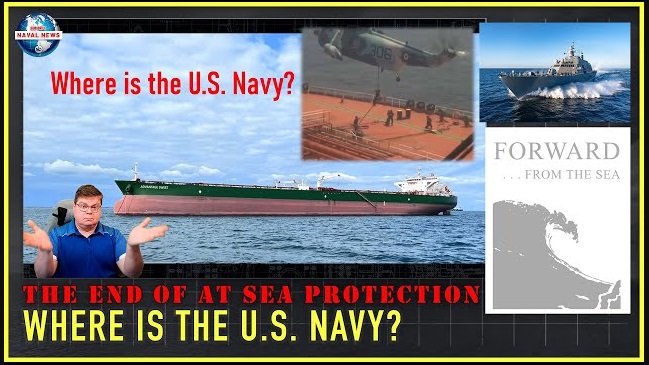
Over the last few months, the US Navy has suffered its most significant setback in the last 50 years, a disaster more damaging than the pier-side sinking of the Bon Homme Richard or the loss of 17 sailors in two destroyer collisions. It is a setback that is existential, and casts into question a core reason for the Navy’s very existence, writes Steve Cohen, a former member of the Board of Directors of the United States Naval Institute, at ‘The Hill’.
For the Navy is seemingly abandoning a key mission: keeping vital sea lanes open to commerce. After a nine-month deployment to claw back control of the Suez Canal and Red Sea from Houthi rebels in Yemen, the Dwight D. Eisenhower(Ike) carrier strike group returned to the U.S., without dislodging the Iran-backed Houthis.
The impact on the global economy is significant:
- Container shipping is down 90 percent since December 2023. Some $1 trillion in commerce — 40 percent of all Europe-to-Asia trade — used to pass through that sea lane, the world’s third busiest, handling more ships than the Panama Canal. Only the English Channel and the Malacca Strait see more traffic.
- An estimated 90 percent of world trade (by value) travels by sea. It accounts for $5.4 trillion of U.S. annual commerce, and supports 31 million American jobs.
- Ships are being diverted around Africa’s Cape of Good Hope, adding over 11,000 miles, one-to-two weeks to each journey, and $1 million extra in fuel to each voyage. Insurance premiums are up 1,000 percent and a container that used to cost $1,500 to ship now costs $6,000.
- The impact is not limited to the Middle East, but is causing a “cascading impact” around the world.
Keeping these sea lanes open has been a key part of the Navy’s raison d’etre since the founding of the republic, when the Navy was created largely to protect merchant shipping. And that role has endured through the present. As John Kennedy once said, “The United States must control the sea if it is to protect our security.”
Nonetheless, when the Ike battle group returned to Norfolk last month, it didn’t fly a banner proclaiming “mission accomplished.” Instead, the Navy issued a message that was, at best, less than inspiring.
The Navy boasted that the deployment was “unprecedented.” Not only was it unusually long, but it marked the first time since World War II that a U.S. aircraft carrier came under constant direct threat from an enemy.
On station, the ships launched 155 Standard-2 missiles against Houthi drones. We fired 135 Tomahawk cruise missiles at land targets, and naval aircraft launched nearly 60 air-to-air missiles and 420 air-to-surface weapons. The cost of each Tomahawk and Standard-2 missile was at least $2 million – to target a $2,000 drone…
Yet the mission failed. The Houthis continue to control the Red Sea. For all the effort, dedication and skill shown by sailors and air crews, it was too little to get the job done.
read more in our Telegram-channel https://t.me/The_International_Affairs

 10:34 15.09.2024 •
10:34 15.09.2024 •






















